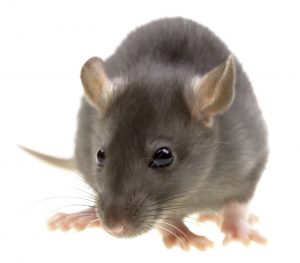If you’re hearing scurrying sounds at night, you might have unwelcome guests. Rats are relatively common household pests that can expose you to harmful diseases and damage your property.
Learn more about rats and deal with a rat infestation promptly.
Request Rat Removal Services ➔

What Do Rats Look Like?
The types of rats you generally find in a home include roof and Norway rats. There are many differences between roof rats and Norway rats. While the former is black with hairless ears and dark tails, the latter is brown with furry ears and hairless tails. Roof rats are also slightly smaller than Norway rats.
Difference Between Rats & Mice ➔
What Do Rats Eat?
In the wild, rats eat fruits, seeds, nuts, vegetables and snails. In a human habitat, they’ll eat bird seed, pet food or items from your household garbage. Open garbage bins and pet food left outside can attract rats to your home. A vegetable garden can also attract rats, so it’s important to harvest as soon as your fruit and vegetables are ripe.
Where Do Rats Nest?
Rats are opportunists, so they will nest wherever they find a warm shelter close to food and water. These rodents live in basements, crawlspaces, attics and eaves. You might also find a rat nest under appliances or in cupboards.
In your yard, you’ll find Norway rats in holes near your foundations, under porches or patios as they build burrows. You’ll discover roof rat nests high off the ground in firewood piles and trees.
What Sounds Do Rats Make?
Almost all rat vocalizations are ultrasonic, but they make sounds as they move about. You might hear scampering noises, especially at night.
Frequently Asked Questions
Here are some frequently asked questions about rat infestations.
How Do I Know if I Have Mice or Rats in My Home?
Size is an easy way to distinguish between rats and mice. Mice are noticeably smaller than rats and more likely to seek food in your home. They love carbohydrates and seek out bread, bagels and cereal. Rats are less likely to infiltrate your kitchen and prefer foraging outside.
How to Spot the Difference Between a Rat and Squirrel Infestation?
One way to distinguish if there is a rat infestation or a squirrel in your attic is to listen for sounds of activity. Rats are usually active during the night and squirrels during the daytime.
What Attracts Rats to My Home?
Rats are a common household pest, and human environments attract these rodents. They are attracted to food sources like open garbage bins and leftover pet food, but they are not picky eaters and might even munch on soap or leather. Rats will also be attracted to your home if you have ample rat nesting materials like piles of organic waste or scraps of material.
Rely on Urban Jungle for Rat Removal Services
Staffed by pros with biology or related degrees, trust Urban Jungle to permanently solve your rat problem with trapping and removal services and rat exclusion and repairs. We are fully insured and offer warranty work.
Contact us today to tackle your rat problem as soon as possible!
